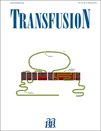Cause-specific mortality associated with leukoreduced, buffy coat–depleted, or no blood transfusion after elective surgery for colorectal cancer: a posttrial 15-year follow-up study
Abstract
BACKGROUND: We previously reported that both leukoreduced (LR) and buffy coat–depleted (BCD) blood transfusions had a detrimental effect on long-term overall survival in patients who underwent elective surgery for colorectal disease. This analysis investigates long-term cause-specific mortality in trial participants diagnosed with colorectal cancer (CRC).
STUDY DESIGN AND METHODS: We used the Danish Civil Registration System to follow 448 trial participants with CRC, from their enrollment in 1992 to 1995 until January 2007. A total of 108 patients were transfused with BCD blood, 94 with LR blood, and 246 did not receive a transfusion (NT). We reviewed death certificates for study patients who died during follow-up. Cause-of-death data were coded according to the International Classification of Diseases (ICD-8 and -10). The Charlson Comorbidity Index was used for risk adjustment.
RESULTS: A total of 43% of NT, 28% of BCD, and 27% of LR transfused patients were alive after 15 years of follow-up (p = 0.001 for transfused vs. NT patients). For LR-transfused versus NT patients the adjusted mortality ratio for death from rectal cancer was 1.81 (95% confidence interval [CI], 0.97-3.38), and for death from cardiovascular disease 2.12 (95% CI, 1.23-3.62). For BCD versus NT patients the adjusted mortality ratio for death from rectal cancer was 1.19 (95% CI, 0.61-2.33) and for cardiovascular disease it was 1.68 (95% CI, 0.97-2.91).
CONCLUSION: LR transfusion is associated with decreased long-term survival due to death from cardiovascular disease. A similar but weaker tendency was observed for BCD transfusion.




